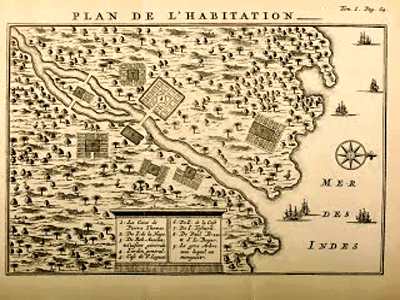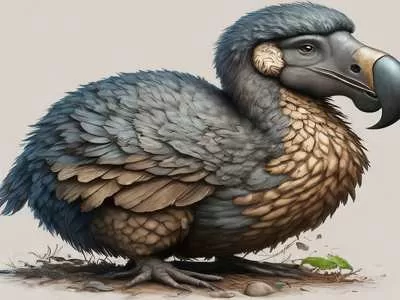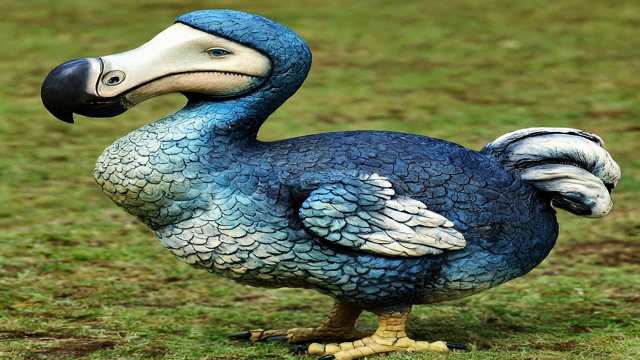The phrase “dead as a doornail” has long been a part of the English lexicon, but few realize its connection to the tragic fate of the Dodo and other flightless birds. Until the advent of modern manufacturing, nails were handmade and highly valued. When used in construction, they were often bent over at the ends—a process known as “clinching”—to secure them in place.
Once clinched, these nails could not be reused, leading to the expression that something is “dead as a doornail.” This phrase has been used by literary giants like Shakespeare and Dickens, but it also serves as a metaphor for the extinction of species like the Dodo and the Solitaire.
Dodo: A Symbol of Extinction
The Dodo (Raphus cucullatus), native to Mauritius, became a symbol of human-induced extinction. This flightless bird, which stood about three feet tall and weighed around 23-39 pounds, was discovered by European sailors in the late 16th century. Unfortunately, the Dodo’s lack of fear of humans made it an easy target for hunters. By the late 17th century, the Dodo was extinct, primarily due to overhunting and the introduction of invasive species such as rats, pigs, and monkeys, which preyed on Dodo eggs and competed for food.

The Dodo’s story gained renewed interest in the 19th century, particularly after George Clark, a Mauritian schoolmaster, excavated subfossil Dodo bones in 1865. His findings sparked curiosity about the bird, and Lewis Carroll famously included a Dodo character in Alice’s Adventures in Wonderland, further embedding the bird in popular culture.
Rodriguez Solitaire: A Lesser-Known Tragedy
While the Dodo is well-known, fewer people are aware of the Rodriguez Solitaire (Pezophaps solitaria), another flightless bird that met a similar fate. Native to Rodriguez, an island about 300 miles east of Mauritius, the Solitaire was described by François Leguat, a French Huguenot who was shipwrecked on the island in the late 17th century. Leguat meticulously documented his observations, noting that the Solitaire was a solitary and territorial bird, more slender than the Dodo, with longer legs and a shorter beak.
The Solitaire’s extinction was hastened by human activity and the introduction of invasive species. By the mid-18th century, the bird had vanished from the island, with the last confirmed sighting occurring in 1755. Joseph-François de Cossigny, a French naturalist, sought to capture a live specimen but found none. The bird was gone in less than 60 years, a stark reminder of the fragility of island ecosystems.
Solitaire of Bourbon (Réunion)
Another flightless bird, also called the Solitaire, inhabited the island of Bourbon (now Réunion). Early accounts from explorers in the 17th century describe a large, fat bird that could not fly. John Tatton, in 1613, noted that the bird was so tame that sailors could easily beat them down with sticks and stones. By the early 19th century, however, comprehensive surveys of Bourbon revealed no signs of the bird, indicating that it had likely gone extinct.

The fate of the Bourbon Solitaire mirrors that of its relatives, as human exploitation and habitat destruction took their toll. The bird’s flesh was considered a delicacy, further incentivizing its hunting. By the time naturalists began to study these birds in detail, it was too late; they had already vanished from the earth.
Legacy of Extinction
The extinction of the Dodo and the Solitaires serves as a cautionary tale about the impact of human activity on wildlife. The phrase “dead as a doornail” has evolved into “dead as a Dodo,” reflecting society’s recognition of the bird’s tragic fate. The Dodo’s remains are now limited to a few museum specimens, including a foot in the British Museum and a cranium in Copenhagen. The Ashmolean Museum in Oxford houses the remnants of a stuffed Dodo that was nearly destroyed in the 18th century.
Hugh Edwin Strickland and Alexander Melville’s work in the mid-19th century helped to establish the Dodo’s kinship with the Rodriguez Solitaire, placing them in the Columbidae family, which includes pigeons. Their research highlighted the importance of preserving biodiversity and the need for conservation efforts to protect vulnerable species.
Importance of Conservation
Today, the stories of the Dodo and the Solitaires remind us of the urgent need for wildlife conservation. The extinction of these birds was not just a loss of species; it was a loss of biodiversity that affected entire ecosystems. As we face ongoing threats to wildlife, including habitat destruction, climate change, and invasive species, it is crucial to learn from the past.
Conservation organizations worldwide are working to protect endangered species and restore habitats. By raising awareness and advocating for sustainable practices, we can help ensure that future generations do not have to witness the extinction of more species.
Conclusion
The tales of the Dodo and the Rodriguez Solitaire serve as poignant reminders of the consequences of human actions on the natural world. As we reflect on their tragic fates, we must commit to protecting the biodiversity that remains. The phrase “dead as a doornail” may have originated from a bygone era, but its relevance endures as we strive to prevent further losses in our planet’s rich tapestry of life.
By understanding the past and taking action in the present, we can work towards a future where no species is lost to the indifference of humanity. The Dodo and the Solitaires may be gone, but their stories continue to inspire conservation efforts and remind us of our responsibility to protect the natural world.

